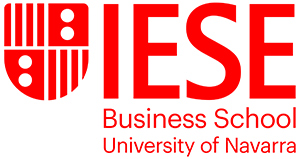Surely you remember the first time you got paid for working. Whether it was babysitting your neighbors’ child, some revision classes, or a summer job, it gave you first-hand experience of one of the foundations of our society: that providing value merits compensation.
Currently, your company probably already rewards your dedication, and that of your colleagues, with a lot more than just a payslip. However, changes affecting the labor market in recent years are forcing companies to go one step further and ask themselves what a “salary”, as we used to understand it, should consist of.
Traditionally, although there were obvious differences between senior executives, middle managers and employees, compensation plans were constructed around four elements: basic salary, short-term incentives, long-term compensation, and additional benefits packages. As these models were mainly focused on the economic aspect of work, they were designed to compensate employees for their performance, improve their wellbeing, and encourage success in their careers.
Although it is clear that these structures are not going to disappear, compensation-related innovation will allow your company to adapt to new ways of working, be more attractive to future candidates, and improve talent retention. The proposals appearing on the horizon point towards greater transparency, more options for personalization and flexibility, and professional development for each employee. If you meet people’s individual needs, you will have a more motivated, committed workforce that is aligned with the objectives and values of the organization.
More personalized, transparent, sustainable salaries
According to a survey carried out by the consulting firm Willis Towers Watson, the majority of professionals think that their company should understand their preferences, in the same way as they understand the preferences of their clients. This would, naturally, allow for greater personalization of their compensation. But, how can we deal with this change? These are some of the key elements which you may be able to use to support a new way of looking at compensation:
- Different points in life: things aren’t the same if you’ve just had children as if you don’t have any. They’re also not the same if you’re young as if you’re about to retire. Salary packages could be designed to better respond to each stage in life.
- Different locations: hybrid working and travel affect the costs that employees need to assume in order to be able to work. Compensation could also better respond to these variables.
- Different lifestyles: while they may have a stable job and a long working day, some people would prefer to work on projects over a period where they need greater flexibility, modifying their compensation as a consequence.
On the other hand, transparency in relation to compensation is becoming an essential requirement, for both employees and executives. According to professionals from different countries who were consulted as part of the Glassdoor Global Survey on Salary Transparency:
- Seven in ten employees believe that salary transparency is good for the business, and for staff satisfaction.
- Only 59% of men and 51% of women understand how compensation is decided within their company.
- Less than 40% of companies report company salaries to their own employees internally.
Although complete transparency in relation to salaries would be a desirable goal for many professionals, the reality is that, for many companies today, achieving this is still an almost impossible task. Where you probably can make progress more easily, as a director, is in providing greater clarity when it comes to defining and communicating the processes for assessment, progression, and growth within the company, and how they are applied. If you ensure that all staff know and understand the rules of the game, you will avoid a lot of misunderstandings and situations of distrust. Don’t forget that one of the consequences of a lack of transparency is the persistent salary gap between men and women who are doing the same job. Fair salaries, as well as rights and civil liberties, run the risk of disappearing into obscurity.
Finally, it is important to highlight that ESG objectives (environmental, social and governance) carry increasing weight when it comes to preparing compensation plans – especially for senior management salaries. Therefore, it is expected that, in the next few years, the compensation of corporate leaders will not only depend on the financial performance of the business, but also on their ability to drive innovation, diversity and inclusion within the company.

Fairer compensation for better informed professionals
Another key factor that you need to take into account when creating new compensation models within your company is the ease with which executives and professionals from any sector can check whether or not they are receiving fair compensation, or a favorable offer, for their work. This information is much more accessible today, and it is relatively easy to get hold of, by:
- Consulting other professionals in the same sector, and asking them about the social benefits, bonuses and compensation systems that their companies offer.
- Identifying the salaries that the market is offering for similar positions, using well-known salary comparison tools, such as Michael Page, or the Hays, Indeed, Glassdoor or Infojobs guides.
- Comparing the differences in compensation between men and women. In various countries, there are official public records in which companies of a certain size must justify their policies in relation to salary equality.
Keys to designing the salary of the future
With all these elements on the table, it is expected that, within the next few years, salaries will progress towards models that allow employees to choose between different options that are suited to their individual needs at any given moment. Including, for example, programs for comprehensive wellbeing, flexible schedules, health benefits, family care, or continuous education plans.
As a Human Resources executive, taking on the design of a new compensation plan for your teams may seem like a jigsaw puzzle that is almost impossible to solve. A good way to start is to focus on the specific needs and requirements of your employees. Requests that may have already been there for years, but which were not stated as forcefully as they are now:
- Salary equity and competitiveness, measuring individual performance in real time.
- Flexibility and trust to allow for the implementation of hybrid working systems.
- Being able to demonstrate your contribution without being limited by rigid hierarchies, and having the opportunity to be heard.
- Receiving recognition for your individual contribution and performance, beyond the purely economic.
- Counting on a solid team and an environment that favors collaboration.
- Clarity on the purpose of your work, and the purpose of the company.
- Access to personalized, flexible training plans.
- Economic and social benefits that are suitable for different points in life.
Knowing what is needed is the first step. Successfully providing for such diverse desires requires dedication, investment and, above all, a large dose of creativity.
In this process, it can also be helpful to adopt a strategy for what is known as Total Rewards; a concept that basically encompasses not only the salary provided, but also all the other things that the company can offer its employees to ensure that coming to work provides them with the maximum amount of value in exchange for their services.
If you don’t know where to start, here are some ideas for elements that you can begin to include in your company’s new “salary”.
- Personal financial advice services.
- Co-financing of outstanding university or postgraduate loans.
- Option to work shorter, more flexible weeks or days.
- Personalization of bonuses, and variable compensation.
- Preferential access to internal vacancies, and rotation and development programs.
- Option to work on one-off projects that may represent an addition to your fixed salary.
- Specialist training programs.
- Access to physical and emotional wellbeing services.
The current labor market is evolving at breakneck speed. For this reason, those executives who are able to adapt more quickly will have greater opportunities to create and develop teams that are more diverse, talented, motivated and committed. With IESE’s focused programs and training for executives, you will find out about the latest trends in leadership, and you will be better prepared to support each member of your team in their growth, with more human, innovative solutions.

















